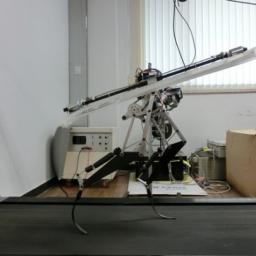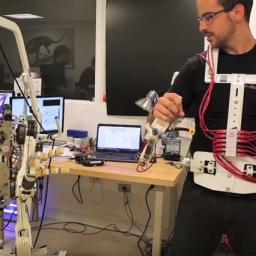
Advances in robotics are entering a new phase of complexity, including in the essential balance feedback response area of research, which is essential to mobility. Check out HERMES, as just one example:
The researchers worked with
HERMES, a 100-pound biped robot designed by the MIT team, along with the interface, for disaster response. They envision deploying HERMES to a disaster site, where the robot would explore the area, guided by a human operator from a remote location. The researchers will present a paper on the interface at the IEEE/RSJ International Conference on Intelligent Robots and Systems in September. MIT's two-legged robot is wreaking controlled havoc: punching through drywall, smashing soda cans, kicking over trash buckets, and karate-chopping boards in half. The robots actions, however, are not its own. Just a few feet away, PhD student Joao Ramos stands on a platform, wearing an exoskeleton of wires and motors.
Ed note: I propose building two of these things, and then having the two researchers/controllers fight it out.
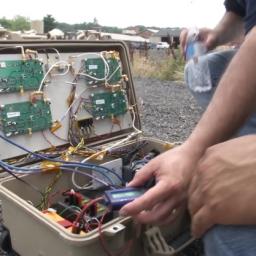
Search-and-rescue technology developed in part by NASA helped free four men trapped under 10-feet of debris in Nepal. The two-year-old
FINDER tool users microwave-radar technology to detect heartbeats of people trapped in wreckage. Following the April 25 earthquake, two prototype FINDER devices were deployed to search teams in Nepal. Arriving on April 29 to assist with rescue efforts, the FINDER tools detected two heartbeats beneath two different collapsed structures in the village of Chautara, where the four men had been trapped for days.
The device has previously detected people buried under up to 30 feet of rubble, hidden behind 20 feet of solid concrete, and at a distance of 100 feet in open spaces, but "The true test of any technology is how well it works in a real-life operational setting." A new "locator" feature also provides confirmation of a heartbeat, and the approximate location of the trapped individuals within five feet.
What's new in robotics? Depends where you are.
Scientists at Harvard are putting their time and energy into the newish field of soft-robotics, a field that uses elastomer - a type of polymer similar to rubber - to perform behaviors such as grasping a human hand or crawling across the ground. Eventually, researchers say that soft robots may be instrumental in things such as physical therapy, minimally invasive surgery, and search-and-rescue operations. By using soft robotics, engineers have created projects like a pneumatic glove for rehabilitating hand movement, a cardiac simulator that mimics the precise movements of a human heart, and a device for thumb rehabilitation.
In Japan, meanwhile, scientists are putting a happier spin on swarm robots - small robots that can communicate and interact to achieve common goals - by
rolling out cheerleader robots that use swarm technology to animate and entertain.
The Murata Cheerleading robots ... look like dolls, have glowing eyes and balance on steel balls. Unveiled Thursday in Tokyo by components maker Murata Manufacturing, each bot looks like a cartoonish girl sporting a red skirt and short black hair. A series of rollers under the skirt keep the robot balanced on a ball or rotate it in a particular direction to move around. Under the afro, meanwhile, nestles an infrared sensor and ultrasonic microphones that help the robot detect objects nearby. Three gyro sensors control motion from front to back, side to side and in rotation. A wireless network is used to control a group of 10 cheerleader robots. They can perform precisely synchronized dance routines, moving into formations such as a heart while spinning on their balls.
It's all very kawaii, and of course intended to generate attention among Japanese audiences and visitors to trade shows. "We designed the cheerleader robots to cheer people up and make them smile," said Murata spokesman Koichi Yoshikawa. "Their features can be summed up as '3S': stability, synchronization and sensing and communication."
Now, what could we do if we combined those two technologies?
 Bladerunner
Bladerunner, the Jetsons,
I, Robot: our fascination with a future world where robots serve (and sometimes kill) us continues unabated. But while most of us are just idly daydreaming what that world of automated companions would look like, or working on purpose-built robotics like
Big Dog, Japan is aggressively pushing the envelope on robotics research. In fact, by most accounts, they've got us
squarely in the Uncanny Valley, that awkward emotional malaise you feel when interacting with a robotic being that is
almost, but not quite human.
CNN has published an interesting overview of the Robot Revolution in Japan
1. And it's pretty amazing. Start with the world's first
virtual pop star, or
Pepper, the first humanoid robot programmed with emotion. Freaky? Then check out
Miraikan [Japanese], Japan's National Museum of Emerging Science and Innovation, where a lot of the magic is happening.
Here, visitors can interact with ASIMO, the Honda-developed android that can run, perform tasks, and interact with people. Honda first unveiled ASIMO a decade ago, and even today it remains a futuristic vision of what robotics may one day hope to achieve on a consumer scale. ... There's Otonaroid, who looks like a young Japanese woman with silicone skin, flowing hair, and blinking eyes. ... And then there's Kodomoroid, an android newscaster that reads headlines to museum visitors, and Telenoid, a creepy-looking communication device that allows you to "speak" to friends or loved ones who are far away -- and feel as if you are sitting with them. You can hold and hug the Telenoid, and it hugs you back with its little stubs for arms.
Curious to see what the future looks like? Now's your chance.
1[Ed. note:
This time, the "Robot Revolution" refers to spectacular advances in the science of designing and building robots.
Next time though, it's going to mean we all hide in the hill caves before the Killer Robots overthrow and enslave us ...]
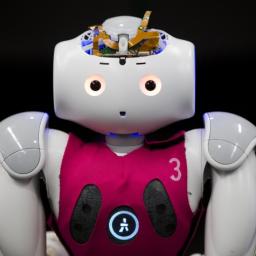
Sports bring about advances in technology too, although less frequently and all too often, chemically. But after watching the last couple of matches of FIFA World Cup 2014, I thought I'd look into what new technologies were being used or had been put into usage in order to present the World Cup.
Here are five bits of technology being used in this cup, but be warned, one of them is the frikkin' "Twitter Wall," which I'm not sure counts as innovation.
Stick around though. In another 35 years,
if these guys' prediction is correct, we'll have FIFA robots playing their own World Cup, and we can bet our money on which robotic team will win it. Hopefully by that time we'll all be getting back and forth to work on an advanced version of these
rocket skates too, if only to ensure we can still outrun the robots.
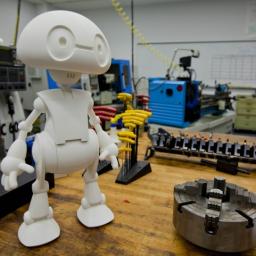
Intel plans to
offer a consumer grade 3D printed robot for $1600 later this year. Jimmy,
a desktop robot , will include an Intel chip and be programmable using open source tools.
The hardware designs will be freely available online, allowing anyone with access to a 3-D printer to generate and assemble the basic parts.
The grand vision is to lower the barrier of entry to robotics.
It's not
the Terminator , but it's a start.
Military robots are here, and they're taking an increasingly important role in modern warfare . The folks at Vox write:
The armed robots issue is becoming so real, so fast, that 87 countries sat down at a United Nations-convened conference from May 13th to the 15th to discuss banning the things. Those nations, including Russia, China, and the United States, discussed amending the UN Convention on Certain Conventional Weapons, which 117 countries have accepted, to prohibit the use of armed robots during wartime. A lot of the news coverage on this issue has treated robot arms control as if it's a joke or a novelty. It's neither: For over a year, Human Rights Watch has been building a campaign to pressure for banning military robots, arguing that they pose an unacceptable threat to civilian populations. Are they right? Should we be banning what HRW calls "killer robots"?
What's your opinion? Crawl out of your underground bunker/weapons cache and let your fellow Pipeheads hear you. But do it quietly:
the future robots can hear you .
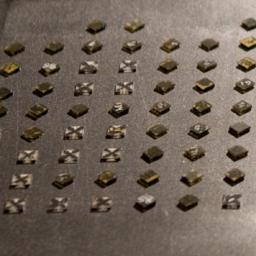
What's cooler than a robot? A micro-robot. What's cooler than that?
A swarm of them , organizing effortlessly, like ants, to accomplish complicated tasks in parallel and on a small scale, like the manufacture of circuit boards or other products, and dealing effortlessly with both solids and liquids. Sound interesting? It does to
SRI International , who has developed and patented a technology called Diamagnetic Micro Manipulation (DM3).
It uses "printed circuit boards to drive and control micro-robots built from simple, low-cost magnets that are propelled electromagnetically. This could enable cost-effective production of large numbers of micro-robots that can reliably handle a wide variety of solid and liquid materials - including electronics. ... [Their] vision is to enable an assembly head containing thousands of micro-robots to manufacture high-quality macro-scale products while providing millimeter-scale structural control. For example, some micro-robots will carry components (electronic as well as mechanical, such as truss elements), some micro-robots will deposit liquids, and others will perform in situ quality analysis. Mounted to a mobile robotic base, a micro-factory will be able to build parts of practically any size."
Have a look at their statement on an ongoing
DARPA Open Manufacturing proposition for
Microfactories for smart manufacturing . These scare me more than
Big-Dog . Lets hope they can never self replicate and
swarm by the millions .
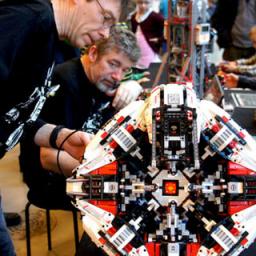
How long does it take you to solve a
Rubik's Cube puzzle? Because, unless you answered, "under three seconds" you're going to have to do a bit more practice.
The new, mind-blowing record of 3.253 seconds was set on Saturday, March 15th, by a robot at the Big Bang Fair in Birmingham, U.K. The robot was built by Mike Dobson and David Gilday using LEGO MINDSTORMS EV3, LEGO Technic and a smartphone. The record is not only faster than previous record holder, the
CUBESTORMER II robot , but also faster than the fastest human time of 5.55 seconds.
Watch a video of the feat here .
The Lego website has additional details as well.
[Editor's note: As for me, I'll be impressed when a robot knows how to tie a necktie.
Oh, wait ...]
 Advances in robotics are entering a new phase of complexity, including in the essential balance feedback response area of research, which is essential to mobility. Check out HERMES, as just one example:
Advances in robotics are entering a new phase of complexity, including in the essential balance feedback response area of research, which is essential to mobility. Check out HERMES, as just one example:


